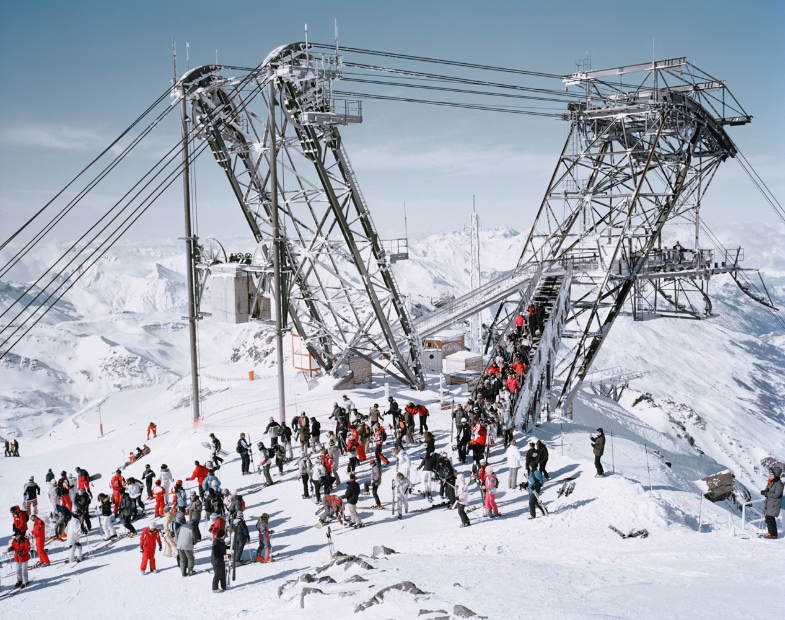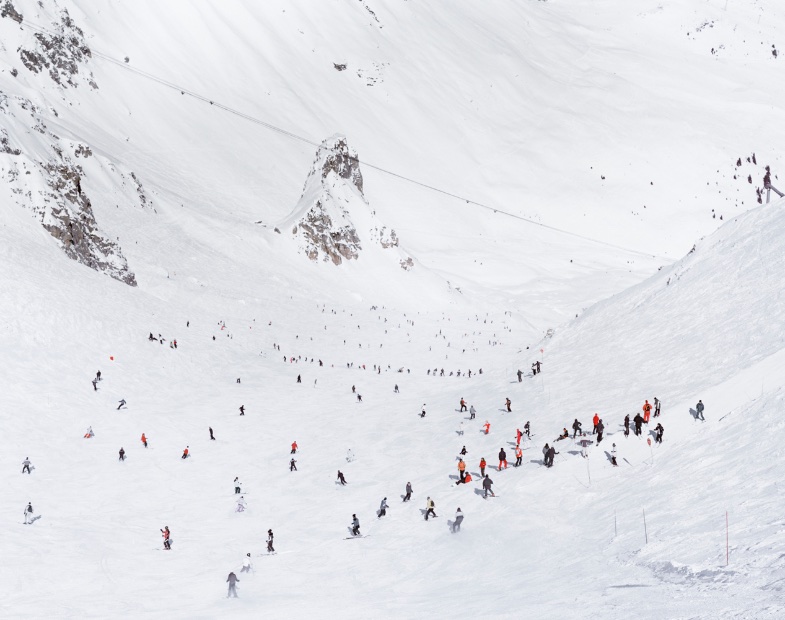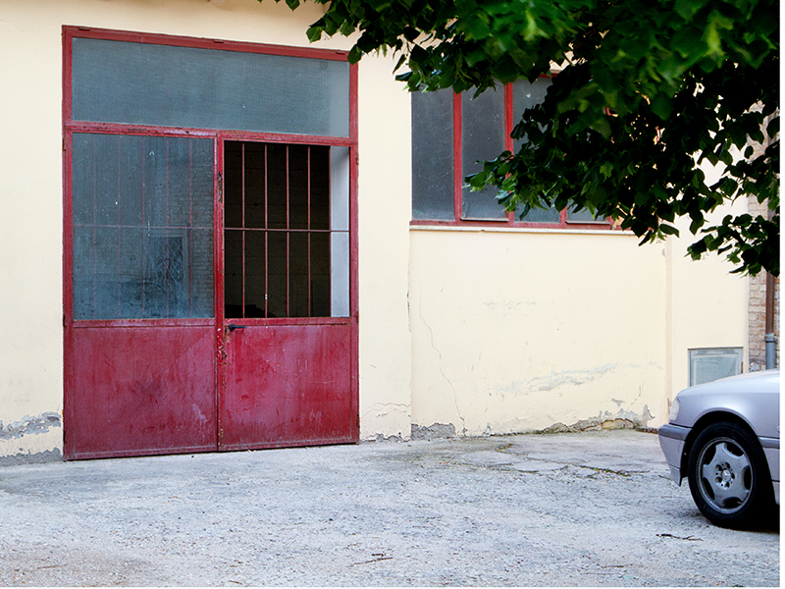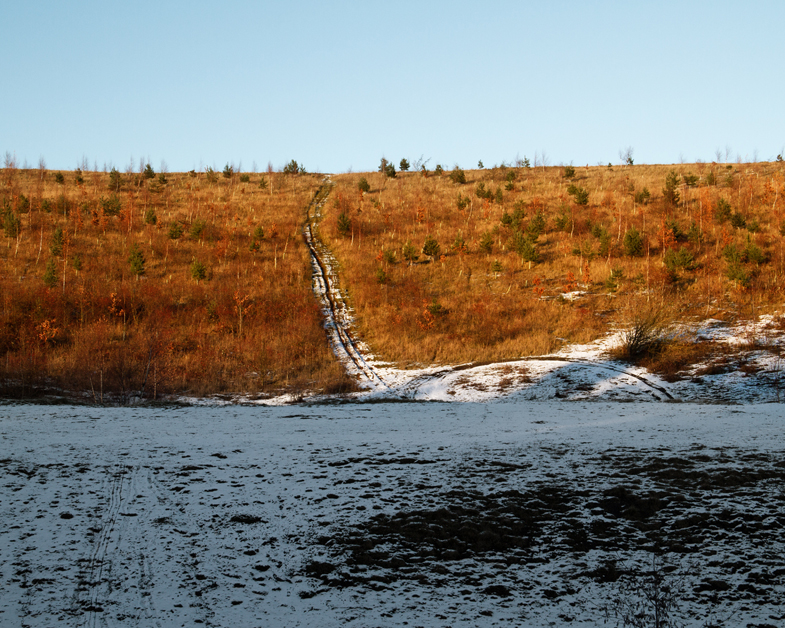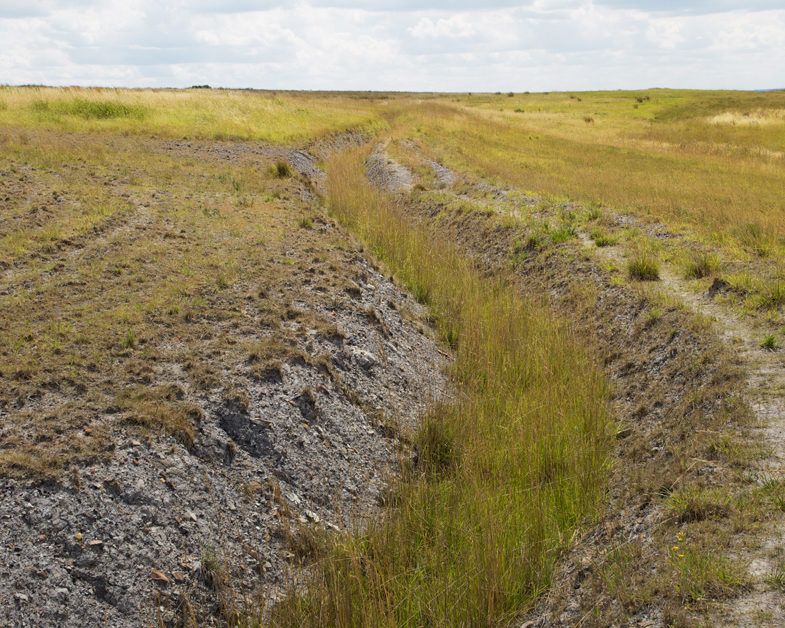
In this series, called Crowded Slopes, I explore the tension between man’s attempt to shape the alpine environment and our vulnerability confronted with an inability to control its natural forces.
In contrast with 19th century romantics who were awed by the mysterious power of nature and poignantly aware of man’s relative insignificance, the expanding leisure class of the past century has attempted to tame these forces and create a recreational safety zone.
Ski resorts with easy accessibility, urban density and architecture, snowmaking, piste grooming and avalanche blasting, create an illusion of security. The predictability bordering on absurdity of human behavior is apparent in skiers’ desire to herd together, move as a pack and remain within a comfort zone, avoiding ‘forbidden’ areas.
As a microcosm of human behavior, this highlights man’s urge to socialise, colonise and dominate versus the romantic quest for solitary and contemplative experiences.
—Dede Johnston, London

